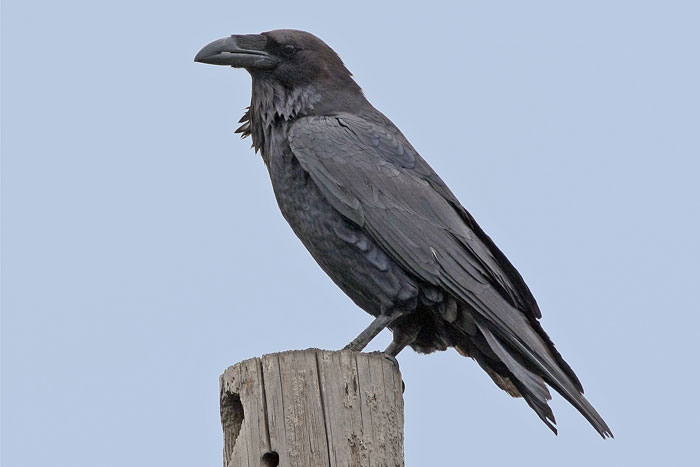
Corvus corax
SUBFAMILY
Corvinae
TAXONOMY
Corvus corax Linnaeus, 1758, Sweden. Eight subspecies may be
recognized.
OTHER COMMON NAMES
French: Grand corbeau; German: Kolkrabe; Spanish: Cuervo
Comъn.
PHYSICAL CHARACTERISTICS
22.62–26.91 in (58–69 cm); 2.02–3.43 lb (92–156 g). Plumage
is glossy black. Prominent nasal bristles cover basal third of
upper mandible. Long, heavy bill is black and the distal part
of the culmen is strongly decurved. Legs and feet are also
black.
DISTRIBUTION
Most widespread corvid found in most of the Northern Hemisphere.
HABITAT
A wide variety of habitats, generally open and away from human
HABITAT
ion, including treeless tundra.
BEHAVIOR
Established pairs remain on large, usually well-spaced territories.
The familiar guttural “krok” call is the most recognizable
of a highly varied vocal repertoire.
FEEDING ECOLOGY AND DIET
Mainly carrion feeder, but also eats live prey and plant material.
Powerful beak used to tear carrion apart and kill live animals.
Often robs other predators of food. Seeds and berries seasonally
important.
REPRODUCTIVE BIOLOGY
Solitary nester, constructing enormous stick nest in tree or bush,
on cliff ledge, or rarely on the ground. Lays three to seven eggs
early spring. Incubation 18–21 days; fledging 35–42 days.
CONSERVATION STATUS
Thinly distributed throughout range, but not at risk, despite
often heavy persecution.
SIGNIFICANCE TO HUMANS
Mistakenly thought to kill healthy young livestock and consequently
persecuted.
Photo Gallery of - Northern raven
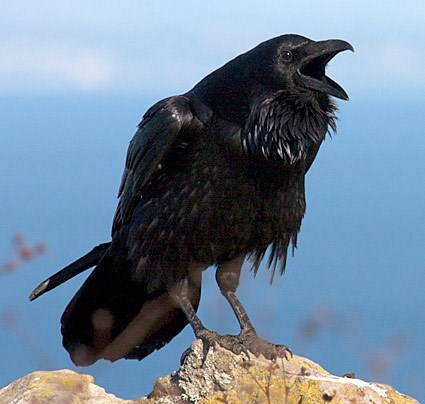
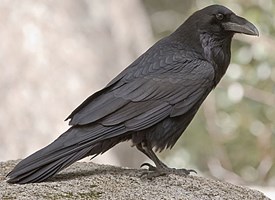
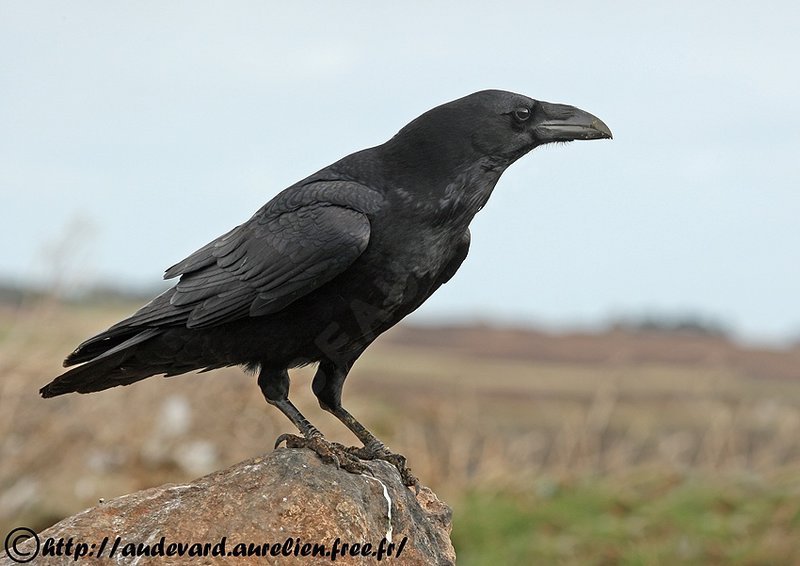
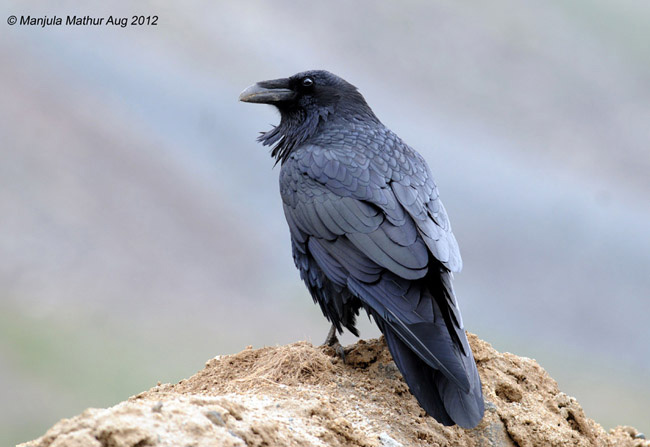
 Animalia Life
Animalia Life